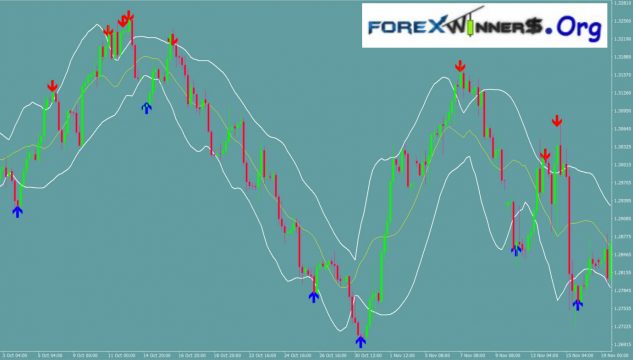Gives
arrows to buy and sell. Works on all pairs.
Although
risk management is one of the simpler topics to grasp, it seems to be the
hardest to follow for most traders. Too often we have seen traders turn winning
positions into losing positions and solid strategies result in losses instead
of profits. Regardless of how intelligent and knowledgeable traders may be
about the markets, their own psychology-will cause them to lose money. What
could be the cause of this? Are the markets really so enigmatic that few can
profit? Or is there simply a common mistake that many traders are prone to
make? The answer is the latter. And the good news is that the problem, while it
can be an emotionally and psychologically challenging one, is ultimately fairly
easy to grasp and solve. Most traders lose money simply because they have no
understanding of or place no importance on rink management. Risk management
involves essentially knowing how much you are willing to risk and how much you
are looking to gain. Without a sense of risk management, most traders simply
hold on to losing positions for an extremely long amount of time, but take
profits on winning positions far too prematurely. The result is a seemingly
paradoxical scenario that in reality is all too common: the trader ends up
having more winning positions than losing ones, but ends up with a negative
profit/loss (P/L). So, what can traders do to ensure they have solid risk
management habits? There are a few key guidelines that all traders, regardless
of their strategy or what they are trading, should keep in mind.
Risk-Reward
Ratio
Traders should look to establish a risk-reward ratio for every trade they place. In other words, they should have an idea of how much they are willing to lose, and how much they are looking to gain. Generally, the risk-reward ratio should beat least 1:2, if not more. Having a solid risk-reward ratio can prevent traders from entering positions that ultimately are not worth the risk.
Stop-Loss
Orders
Traders should also employ stop-loss orders as a way of specifying the maximum loss they are willing to accept. By using stop-loss orders, traders can avoid the common predicament of being in a scenario where they have many winning trades but a single loss large enough to eliminate any trace of profitability in the account. Trailing stops to lock in profits are particularly useful. A good habit of more
successful traders is to employ the rule of moving your stop to break even as soon as your position has profited by the same amount that you initially risked through the stop order. At the same time, some traders may also choose to close a portion of their position.
Download MA_BBands.ex4
:






